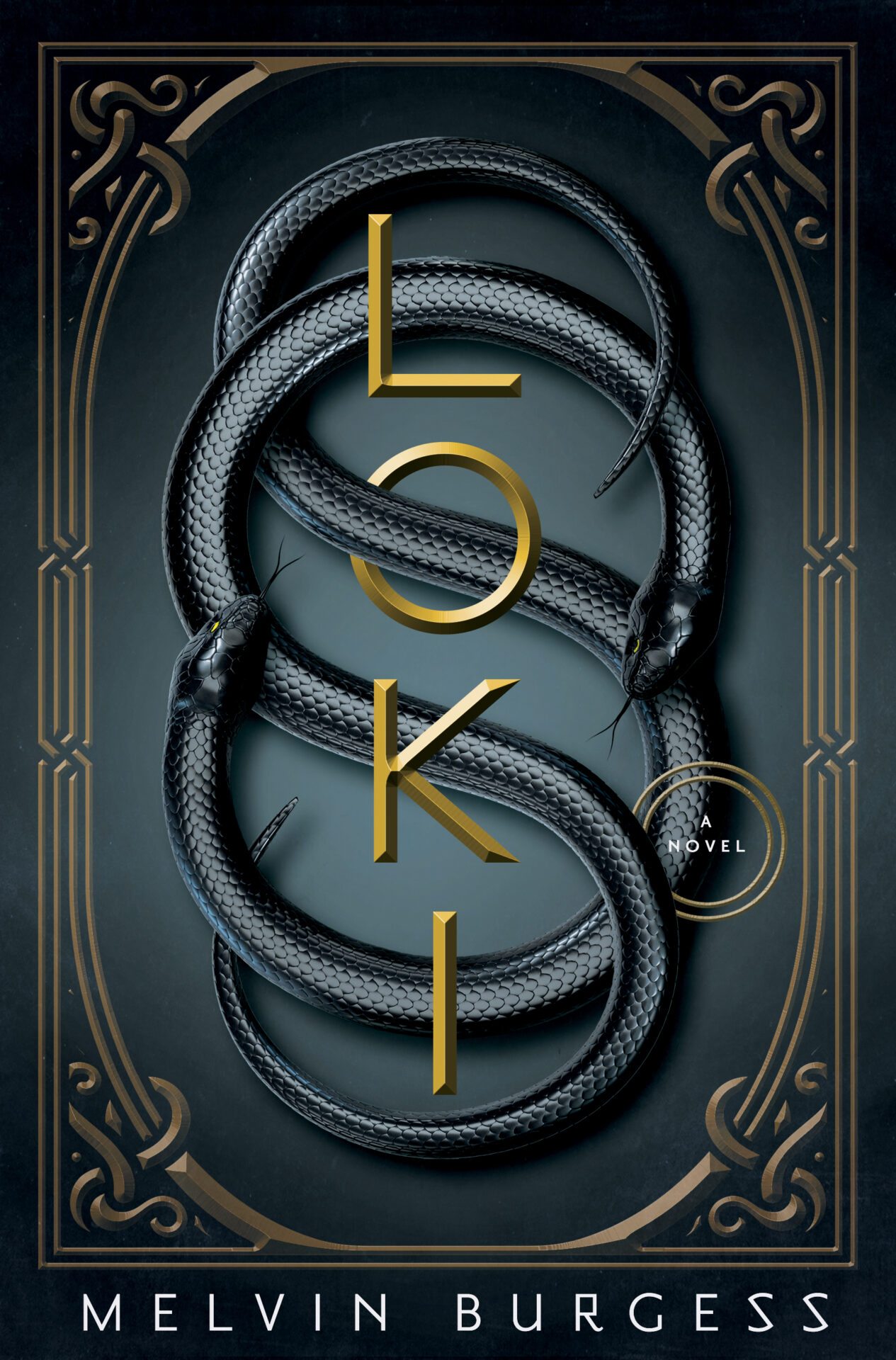
Melvin Burgess is joining us today to talk about his novel, Loki. Here’s the publisher’s description:
Starting with the Norse creation myths, the trickster god Loki takes the reader on a wild ride through Norse mythology, from the era when the gods—the founders of Asgard—defeated a race of monsters, and then hurtles through legendary stories, including Odin hanging himself on the World Tree, the theft of the corrupting goldring, and the murder of Baldr, the god of love and the sun. Born within the heart of a fire in the hollow of a tree trunk, Loki arrives in Asgard as an outsider. He is a trickster, an unreliable narrator, the god of intelligence and politics.
In spite of his cleverness and sparkling wit (or, perhaps, because of this), Loki struggles to find his place among the old patriarchal gods of supernatural power and is constantly at odds with the god of thunder—Thor. Alongside the politics of Asgard, the novel charts the course of Loki’s many loves and families, from his mothering of Odin’s famous horse to his intense, turbulent, and, eventually fatal relationship with Baldr the Beautiful—a tender and moving story of a love that goes wrong
What’s Melvin’s favorite bit?

Melvin Burgess
One of the things that always worries me about re-telling of myths, is that they’re almost always done in a folkloric style, familiar to readers from a hundred traditional stories – perhaps made famous originally by collectors such as the Brother’s Grimm back in the 19C. We tend to forget that this isn’t folklore – it’s a myth. And we also tend to forget that myth itself is – was – religion. It’s not all about a good tale well told. Pagan religions tend to be less judgmental than our own Big Three of Christianity, Islam, and Judaism. They are more interested in representing all aspects of psychology and society, as well as the forces of nature. Love as well as fertility, war as well as death. It can be hilarious, brutal, or beautiful. It has its mysteries. It was, when it was still alive, a vehicle for spirituality. Sacrifice was made. People no doubt had religious experiences. Somewhere in those stories, then, lies the numinous.
In Norse mythology there’s plenty of mystery. Perhaps the strangest and most powerful image is that of Odin, sacrificing himself by hanging nailed to a tree for nine days and nine nights, in order to capture the Runes.
I know that I hung on that windy Tree
Nine whole days and nights,
Stabbed with a spear, offered to Odin,
Myself to my own self given.
Brutal but oddly beautiful in its own strange way, that was one I enjoyed writing up in story form, and I hope I captured something of the terrible but spiritual nature of the verse. There are others where you can find the numinous in these old stories if you look, but I think the ones I enjoyed the most were the unexpected ones – the ones that cropped up in the traditional stories in a way I hadn’t foreseen or expected.
Anyone familiar with Norse mythology will know of Loki’s three monstrous offspring – the Fenris Wolf, the Midgard Serpent, and Hel, the half dead, half living queen of the underworld. We know that Loki had these three offspring with Angrboda, who is described as a giantess in the old stories, but there are no tales surviving about Loki’s time living with this mysterious Jotun woman – also described as a seeress. There is a story that Odin himself once rode down to the Underworld, home of the inglorious dead, to awake her in her tomb and consult her about the future.
Quite a figure then, this Angrboda.
Loki’s story – his pitch, if you like – in my book is that as a loser, he has been subjected to endless propaganda by the victors, the other gods of Asgard. So many of the good things he did have been glossed over, the bad ones exaggerated and many of the crimes and failures of the other goods dumped at his door. In fact, he insists, he is our friend. Always has been …
Whether you choose to believe the Father of Lies is a matter for you to decide … but he describes Angrboda not as a giant, but as a goddess in her own right who couldn’t bear the murderous excesses of the Asgaradian rule.
Surely some room there for something more than the merely folkloric.
I look on writing as something of a performance art myself. When I sit down to write a piece, I know more or less what will happen, but not exactly how. It’s a form of ad libbing. Even so, the births of Angrboda’s thee children was bound to have the strength of myth around it, and so it was. Not always comfortable, but I did feel that the myth took a grip in that part of the story telling.
That was good, but perhaps my favorite part involved the story of the birth of Odin’s horse Sleipnir.
For reader who don’t know the story … the gods in Asgard are at war with the giants of Jotenheim. They want to build a citadel to keep the giants out and get an offer to build one from a master builder, also a giant, who wants payment in the form of the hand in marriage of Freyja, the beautiful fertility goddess, and the sun and moon to light his halls.
The gods of course refuse, but Loki convinces them to make a counter offer – the giant can have his payment if he completes the citadel in one year. To their surprise the giant accepts, provided he can use his horse to help him carry the stone. Foolishly, the gods agree.
But this is no ordinary stallion. He is so strong, so hard working, that it soon becomes evident that the giant will succeed. The gods round on Loki and insist that he solves the problem he has created – so Loki turns himself into a mare, an irresistible mare, who lures the stallion away long enough to bring the giant over his deadline.
The giant is furious and rages at the gods, and is then killed by Thor, who won’t put up with such behavior from a mere giant. Loki becomes pregnant with the stallion, and bears Sleipnir, the famous eight legged horse, fastest of all horses, which he gives to Odin as a gift.
It’s a typical Loki scenario – transgressive, for one thing. He doesn’t just have sex with a horse, he has sex as a mare. Sex, as we know from the Dionysian rites, is very often a powerful thing in pagan religions, and it’s not always in the form that we know and love today.
I thought this story was going to be a comedy kind of thing, but in fact, somehow it took off when Loki and this wonderful stallion engaged in a mad chase out of Asgard, across the Rainbow bridge away into Midgard, our own middle earth. They raced across Europe and Siberia, across the ice – a pair of star-blessed lovers. Loki sings his love for Svadilferi. Their courtship, their love making, the passion of it all …
Well! A mystery indeed. There was no pornography here, just love and sex but on a divine level – divine in the old, pagan sense, let it be admitted.
And there you have it. That was the thing I liked best about writing that book – the discovery of the numinous in tales too tall to be believed, often hidden in the most unlikely places.
LINKS:
Twitter: @melvinburgess
BIO:
Melvin Burgess’s first novel,The Cry of the Wolf, was shortlisted for the Carnegie Medal, which he then won for his cult novel Smack, along with the Guardian’s Children’s Fiction Prize. He won the Los Angeles Times Book Prize for Young Adult Literature for Doing It. Melvin lives in Britain.
